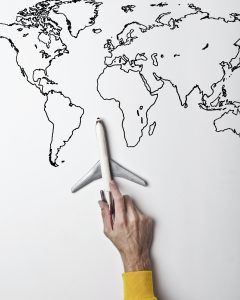THE HISTORY OF AVIATION
The history of the Air Force began in the 40s, during the World War II. This sad and very important event in our history allowed the creation of the Ministry of Aeronautics in 1941. Due to the need to carry out air activities as well as to develop the technology, Brazil invested in manufacturing aircrafts increased its fleet and improved flight schools.

In the 50’s, the first aeronautical engineers class was formed in the country, starting the development of the national aeronautical industry. In São José dos Campos, the Aeronautics Technical Center has been founded, followed by the Aeronautics Technological Institute (ITA), one of the largest aeronautical technology and education institutions in Brazil.
In the 1960s, the humanity witnessed man going to the moon, during the Cold War, and many technological advances, such as the development of aircraft prototypes and the Brazilian space program. In the 70s, the work philosophy aimed to the safety of the operations. Thus, the first Integrated Center for Air Defense and Air Traffic Control (Cindacta 1) emerged in the country. It’s an institution that deals with the air traffic control information. Then, in the 1980s, the Tucano was developed, a training aircraft that has been very successful worldwide. In partnership with Italy, Brazil created the AMX, an air fighter that operated in national defense, and later contributed significantly for investments in the airport infrastructure. The Alcantara Launch Center was created at that decade and women had access to the Air Force.
In the 1990s and 2000s, the Amazon Surveillance System (SIVAM) emerged, with radars, satellites, and planes. Brazil created the fourth Integrated Center for Air Defense and Air Traffic Control (Cindacta 4), which helped to increase radar coverage and reduce the entry of weapons and drugs into the Amazon. In the 2000s, Brazilian air traffic control became one of the best in the world and, at that time, Marcos Pontes, the first Brazilian astronaut, gained space. Women had the opportunity to fly both planes and helicopters, and the FAB marked our history, helping people who were victims of the floods, with rescue, food, and medicine.
Airplanes are very important machines for the development of a country, and in addition we can count on FAB that promotes the defense the peace and assistance to all who need its help. And so, the history of the Air Force with its planes, professionalism and commitment is present in our lives and in our country!








